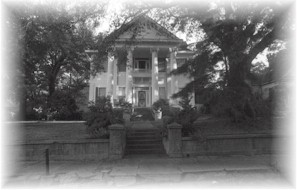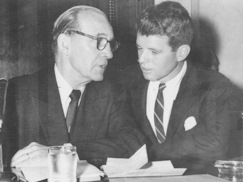Saturday night, March 2,
1957, was cold in Camden, Arkansas, with pouring-down rain and fog so thick people said it
was like pea soup.
Maud Crawford, the only female attorney ever to practice law in the town of some 16,000 people, sat stringing beans in her living room in front of the TV with her vicious Dalmatian that she called Dal on the floor beside her. Her husband, Clyde, had left their stately colonial home on Clifton Street following supper, as he did every night, to drive downtown in the GMC truck Maud had bought him to see a movie at the Malco and to watch the pretty teenage girls neck with their boyfriends on the back row. The townspeople thought Clyde was peculiar, but they had the greatest respect for Maud who was highly intelligent and headed up virtually every civic effort in the community from the Community Chest to serving on the city council. When Clyde got home later that evening after watching the nightly news and having a few beers at Carter Liquor Store, as he did every night following the movie, the lights were on in the house and on both outside porches, and Maud's car was in the driveway with the keys in the ignition, just as she always left them, When he went inside, everything else seemed normal. The doors were unlocked as always, the TV was going, a pan of beans was on the dining room table alongside several legal files that Maud had brought home from the office, her purse was on the living room couch with $142 cash in it, Dal stretched lazily with no sign of upset, and Maud Crawford had disappeared from the face of the earth without a trace, a clue or a motive. No body was ever found.
Because Maud Crawford had been an associate of Senator John McClellan before he was elected to the U.S. Senate, her disappearance made front-page headlines in newspapers throughout the world. At the time, the Senator was chairman of a Senate committee conducting high-profile hearings into alleged Mafia ties to organized labor. Twenty-nine years later, Beth Brickell, who had grown up in the town, returned home to discover that the case had never been properly investigated, that there had been a town cover-up of Maud Crawford's disappearance, and that townspeople were still afraid to talk about it. Brickell cancelled all other plans in her life to stay on for 16 months to unravel what happened to Maud Crawford. The result was an 19-article series that appeared over a five-month period on the front page of the Pulitzer Prize winning Arkansas Gazette revealing what Brickell learned from an investigation that almost got her killed. The first article was a bombshell and the newspaper was threatened with a lawsuit in an effort to halt publication of subsequent articles. The newspaper didn't back down and the complete series was published.
|

